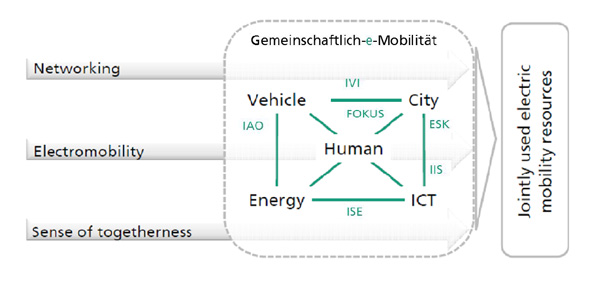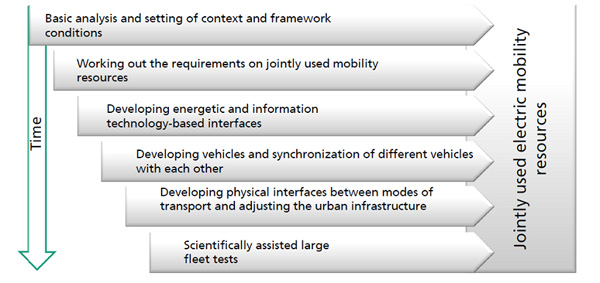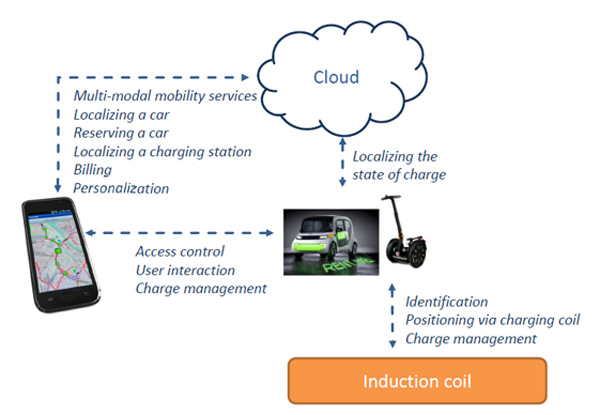Merging the three main development trends of urban mobility
Electric vehicles, such as passenger cars, scooters, Pedelecs and Segways, charging infrastructures as well as data and services for shared use pose a special challenge for technical, legal and economic reasons. In the course of the project, besides the general processing groundwork and development of this new research field, initial technical solutions for these shared-use mobility resources are being developed. The consortium is focusing on investigating the energetic and IT interfaces between users, vehicles and infrastructures. The development of solutions for these interfaces is viewed as crucial for the overall system of collectively used electric mobility resources.
 Fraunhofer-Gesellschaft | Shared use of electric mobility "GeMo"
Fraunhofer-Gesellschaft | Shared use of electric mobility "GeMo"

